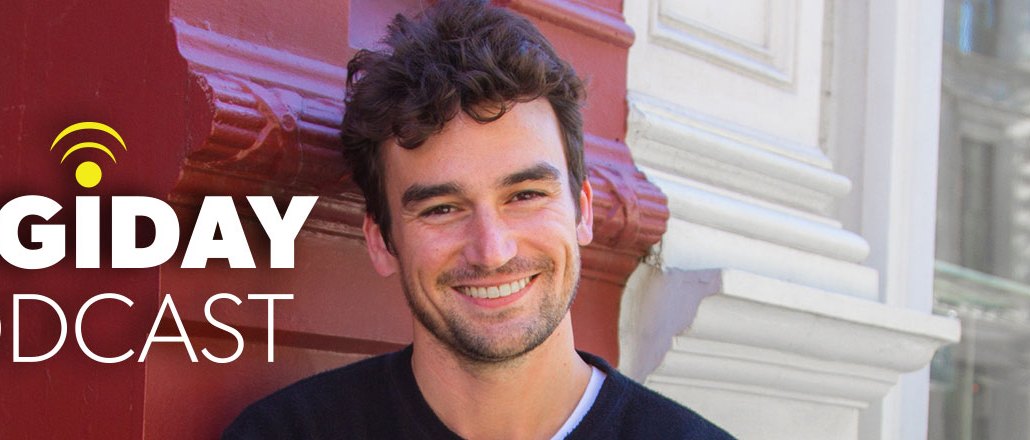Thought Catalog CRO Alex Magnin on growing a profitable media business in 2016

Subscribe: iTunes | Stitcher | RSS
Thought Catalog, a lifestyle and entertainment site geared to young people, began its life in 2010, a fortuitous time to begin a digital media business. Its identity-laced posts, from both staff writers and its community of contributors, were prime for the Facebook feed.
Thought Catalog rode the Facebook wave, going from 1 million visitors a month to a peak of 50 million users per month in just three years. Now, it’s about half that. But while half its audience is gone, one thing hasn’t left: Profitability. Thought Catalog is that rarest of creatures: a digital media company that’s consistently turned a profit.
Of course, there’s been no choice on that front as a boot-strapped company. Thought Catalog’s strategy is to run its publishing business at a low enough cost — it has 20 full-time writers and a staff of 40 — so that programmatic ad sales can cover its operating expenses, with brand content and a book business adding the “cream on top,” as CRO Alex Magnin put it on this week’s Digiday Podcast.
Below are highlights from the conversation with Magnin.
Thought Catalog knew the Facebook audience bonanza wouldn’t last
The “salad days” of Facebook, as Magnin put it, were a time of wonders. Traffic would pour in from clicks in the feed. That allowed the company to grow the business without external capital and put in place the makings of a meaningful brand, Magnin said. But Thought Catalog knew the good times could not last.
“We had a sober sense this was a unique period of time,” Magnin said. “But what we didn’t know was when it was going to go. We were always trying to build a notable, specific and long-lasting type of brand. We always ran our business as though programmatic ad revenue was all we were going to get.
Programmatic gets a bad rap from publishers
Many publisher bemoan the rise of programmatic ad sales and the pressure it has put on publishers. There’s a yearning for the old days when people not algorithms and data crunchers were in charge. But Magnin has always viewed programmatic ad sales as an opportunity not threat.
“This is awesome,” Magnin said. “I can create and monetize content at zero cost of sales. I just have to create the content. When you build with that with your fundamental mindset, you have a much different sense of reality and what your content is worth. You can build a business more stably on top of that.”
Publishers must embrace “the new reality”
Many of the shifts in strategies from publishers, from betting big on video to a focus on massive scale or narrow niches, are in response to a “new reality,” as Magnin puts it: Supply of attention (and impressions) far exceeds demand. In old media, the opposite was true. That means publishers have a few choices: get really big, get really focused, or figure out a way to make money in new ways. And above all, do it cost efficiently.
“We spend a lot of time on internal operations, process and making jobs easy for people,” Magnin said. “You can run a business that reaches 25 million uniques, that does direct sales, has a book publishing division, is launching new websites — and we’re doing that all with a very limited number of people.”
Video is a big-risk opportunity
In 2013 and 2014 the digital media world went gaga for video, staffing up with big video teams and dreams of TV-like ad rates. Thought Catalog, without big venture capital backers, saw the movement and was forced to decide whether to join it. After running the numbers on potential for ad revenue balanced versus the big upfront costs, the company decided video wouldn’t be a focus.
“It becomes about whether there’s a profitable business model there, today or in the future,” Magnin said. “And can we do it meaningfully different in a way that’s going to enhance our brand.”
More in Media

From sidelines to spotlight: Esports events are putting creators center stage
Esports events’ embrace of content creators reflects advertisers’ changing priorities across both gaming and the wider culture. In the past, marketers viewed esports as one of the best ways to reach gamers. In 2025, brands are instead prioritizing creators in their outreach to audiences across demographics and interest areas, including gaming.

Condé Nast and Hearst strike Amazon AI licensing deals for Rufus
Condé Nast and Hearst have joined the New York Times in signing a licensing deal with Amazon for its AI-powered shopping assistant Rufus.

Media Briefing: AI payouts may be entering a new era
AI compensation is evolving — and new models, not just publisher demands, are driving the shift beyond flat-fee licensing.





